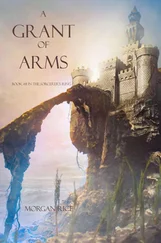The driving aesthetic of military style is uniformity. Whence the word uniform. From first inspection to Arlington National Cemetery, soldiers look like those around them: same hat, same boots, identical white grave marker. They are discouraged from looking unique, because that would encourage them to feel unique, to feel like an individual. The problem with individuals is that they think for themselves and of themselves, rather than for and of their unit. They’re the lone goldfish on the old Pepperidge Farm bags, swimming the other way. They’re a problem.
“You’re more of an engineer than a designer,” says LaFleur of her work. She got her start designing swimwear. It is a more logical transition than it might at first seem. A bathing suit requires expertise with high-performance active-wear fabrics and an understanding of the specialized activity they’re needed for. Ditto, say, a concealable body armor vest. LaFleur’s colleague Dalila Fernandez came to Natick from the now-defunct Priscilla of Boston, purveyors of high-end wedding dresses. Same thing here: A wedding gown entails multilayering of expensive specialty fabrics for an outfit whose useful lifespan may come and go in a single afternoon. Much like a bomb suit. Form follows function—although admittedly more so here than in most studios. Only a military clothing designer’s portfolio would include a mitten that accommodates a lone forefinger in firing position. [9] The Cold Weather Trigger Finger Mitten Insert, a component of the Extreme Cold Weather Mitten Set. As opposed to the Intermediate Cold Wet Glove or the almost fashionable-sounding Summer Flyer’s Glove.
In an Army gone increasingly high-tech, the modern military uniform is less an outfit than a system. It’s a holder of gizmos and gear and the ammunition and batteries that go in that gear. Back before hulking body armor and gear-festooned vests supplied the intimidating profile, the clothing itself was sometimes recruited for the task. High hats and epaulettes made officers appear taller and more broad-shouldered. And the boots. The boots. Dashing knee-high leather boots protected the pant legs, yes, but surely they also boosted morale. Uniforms created not just uniformity but brio and self-confidence. They were crisp, flattering, finished with piping and grosgrain and tassels. They were, to quote Annette LaFleur, “very couture.”
The current combat uniform, with its sensible emphasis on hot-weather comfort, is worn loose and untucked. It doesn’t say “ready to kill” so much as it says “ready for bed.” Still, clothing remains an important Army morale issue. The ACU used to be unisex, but women complained. The shoulders and waist were too wide for many women, or the hips too narrow. The knee patches tended to hit at the shins. Women hated it. They hated it enough that the Army commissioned a female uniform.
“But you can’t call it that,” Accetta says. “Because some of the guys are wearing them.” It’s called the Army Combat Uniform–Alternate, a uniform “for smaller stature Soldiers.”
Every now and again, military fashion has evolved not out of practicality or research or matters of morale but simply out of the sartorial inclinations of one high-ranking individual. British history holds a General Cardigan and a General Raglan, and I like to picture them in their tented quarters, sketching outerwear by lantern light. Most recently, an Army chief of staff decided that black wool berets would be the headpiece of the Army Combat Uniform, not so much because wool is flame-resistant and moisture-wicking but because he dug the look. He dug it despite having to wrangle an exception to the Berry Amendment. He dug it despite his troops’ near-universal preference for visored cloth caps. And despite their having every good reason to prefer caps, because not only do caps shade the eyes but they’re cooler than berets, and lighter and less bulky in a pants leg pocket. (It took ten years, but the Army has finally got its caps back on.)
The most talked about—around Natick—example of sartorial rank-pulling was the Universal Camouflage Pattern used on the Army Combat Uniform beginning in 2005. The idea had been to develop a single camo pattern that would provide concealment for troops in desert, urban, and woodsy settings. The Natick Camouflage Evaluation Facility came up with thirteen pattern and color combinations, duly sent overseas for field tests and feedback. Before the data was in and the study completed, a highly placed general went ahead and picked a pattern. It was not even one of the ones being tested. The new camouflage performed so poorly in Afghanistan that in 2009, the Army spent $3.4 million developing a new and safer pattern for troops deployed there.
Camouflage is interesting from a fashion perspective. As a rule, the military starts—rather than follows—fashion trends in the civilian sphere. Every now and then, they start them and then follow them. Midway through the previous century, Army camouflage prints began showing up in mainstream fashion. It began with clothing and took off from there. As I write this, you can get on the internet and order camouflage wedding bands, dog sweaters, onesies, condoms, flip-flops, hard hats, and football cleats. Camo print became so popular that eventually Navy personnel began clamoring for it. To the embarrassment of many, the current Navy working uniform is a blue camouflage print. Unsure whether perhaps I was missing the point, I asked a Navy commander about the rationale. He looked down at his trousers and sighed. “That’s so no one can see you if you fall overboard.”
No military fashion foolery can compete with the saga of the orange-red underwear. Around the turn of the last century there was, in the phrasing of a paper in the June 1897 issue of Medical Bulletin , “a very prevalent idea that red underwear possesses some occult medical value.” Baseless as it was, the notion made its way to the office of the US surgeon general. A Lieutenant Colonel William Wood reported that British Army officers in India had found some relief from the intense tropical sun by lining their hats with red cloth. A study was commissioned, using troops stationed in the Philippines as subjects. Though a small number of caps were prepared, the Americans seized on the idea of red underwear—perhaps as a sort of secret asset, a hidden psychological edge, like fabulous lingerie or lifts in one’s shoes. Five thousand pairs of orange-red drawers and undershirts were shipped from a War Department depot in Philadelphia, along with a like number of white drawers, as controls. Mental and bodily vigor to be monitored for one year. One thousand men conscripted as subjects.
The garments arrived on the first of December 1908. Whereupon the setbacks began. Four-fifths of the underwear was too tight for all but the smallest men. Perhaps, having seen the destination of the shipment, the clothiers had misunderstood and fashioned the items for the slighter, trimmer bottoms of the Filipino male. Perhaps they were cutting corners. Who can say. Six hundred men were dropped from the study. Worse, the underpants had been sewn from heavy dungaree cotton, causing the men to perspire in places where no one wants to perspire, surely counteracting any mystical cooling properties that the color might have conferred. The sweating proved doubly vexing, as the dye ran badly. Much joshing and ridicule—“bantering by their companions”—ensued. Over a month of washings, the red underwear progressed to yellow and onward to a “dirty cream color.” The cap liners, though less frequently laundered, ran in the rain or when the men sweated, causing red blotches and rivulets running down their faces and yet more bantering.
At the end of a year, the men were interviewed about their experience with the special underwear. Only 16 of 400 had anything positive to say. The red underwear was hotter and scratchier. It “outraged the sensibilities of the wearer.” In addition to prickly heat and rashes and a higher rate of heat exhaustion, it was blamed for headaches, dizziness, fever, blurred vision, boils, and colic. “An Experiment with Orange-Red Underwear” was read aloud at a biennial meeting of the Far Eastern Association of Tropical Medicine, no doubt jollifying the usual assortment of malaria and foot fungus reports.
Читать дальше












